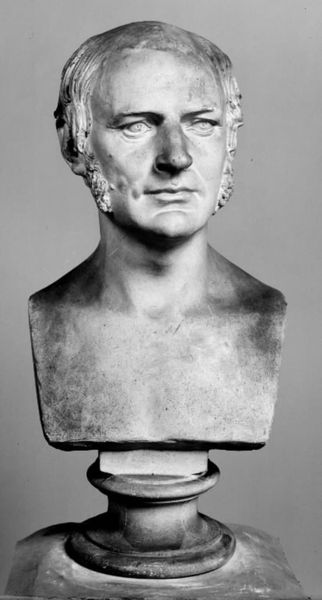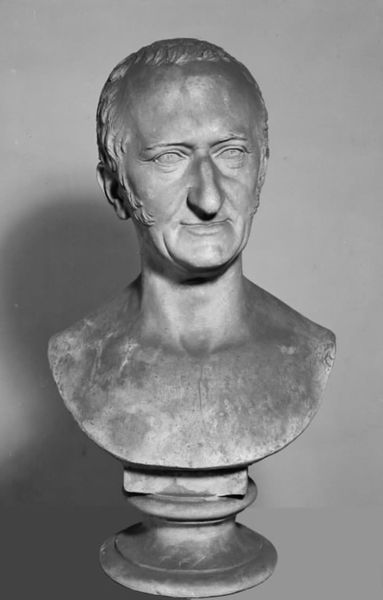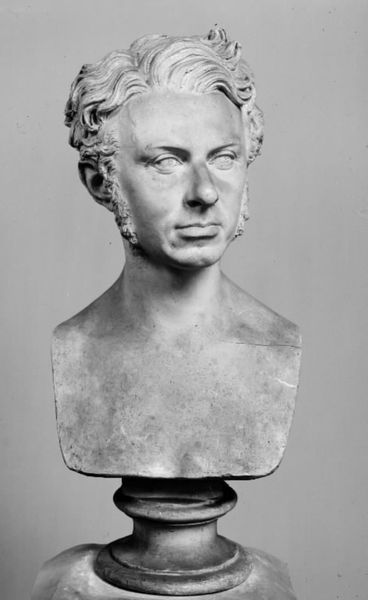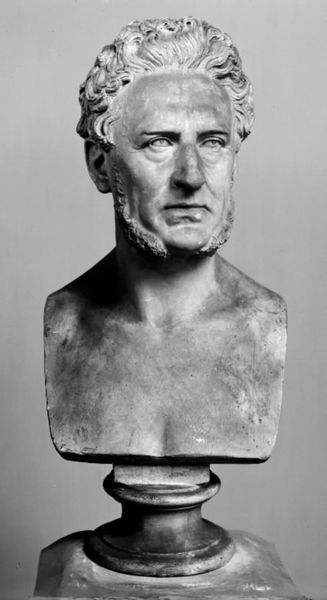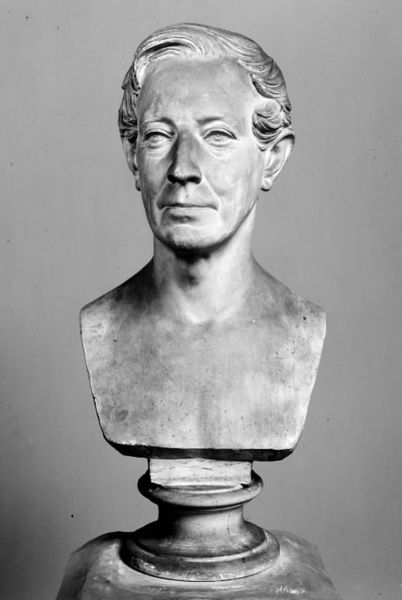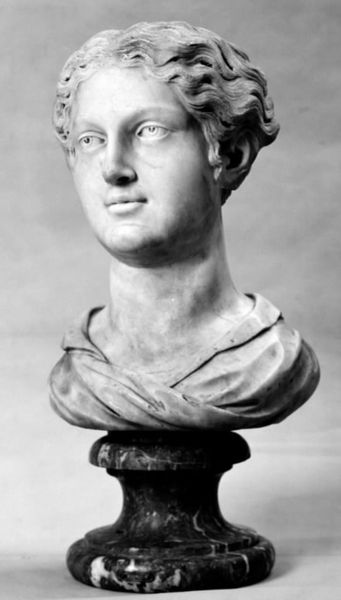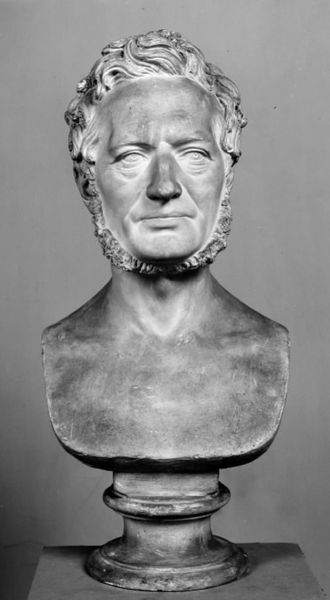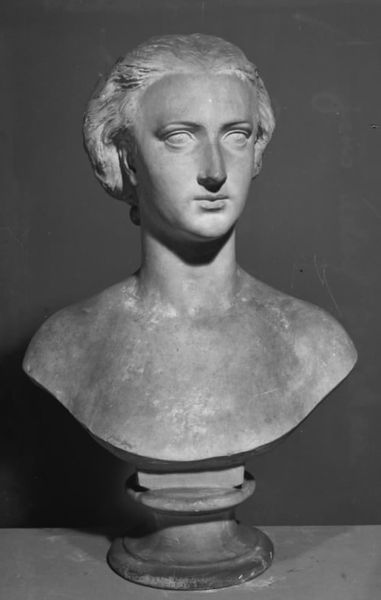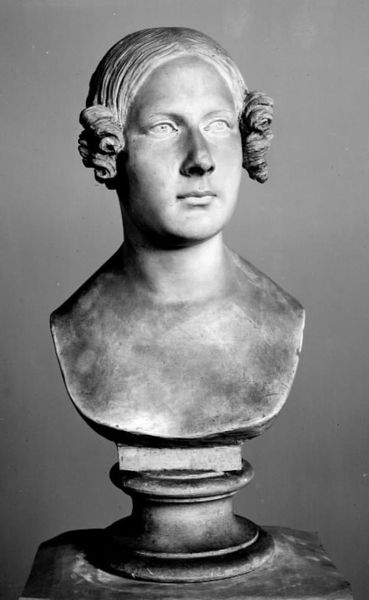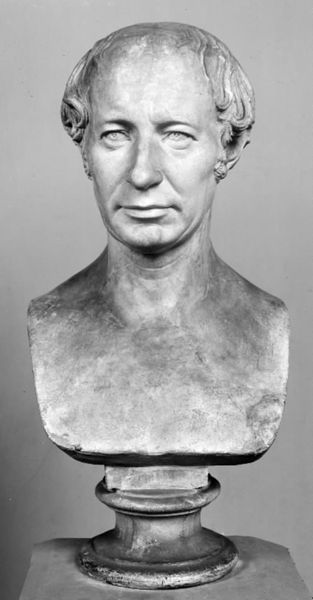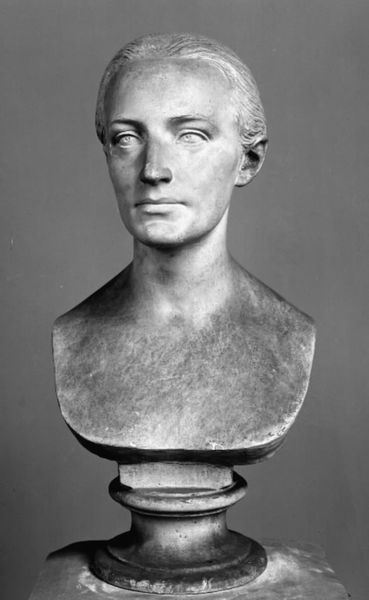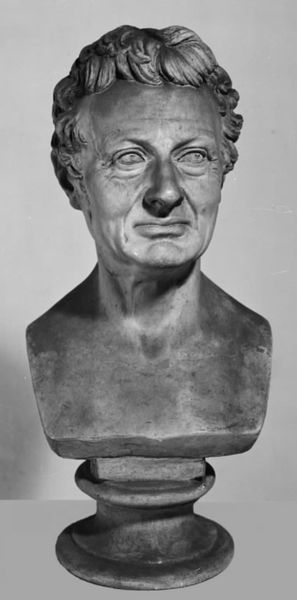
sculpture, marble
#
portrait
#
neoclacissism
#
sculpture
#
sculpture
#
marble
#
realism
Dimensions: 59.3 cm (height) (Netto)
Editor: We’re looking at H.W. Bissen's marble bust of Baron Adam Christoffer Holsten-Carisius, created in 1853. I’m immediately struck by its sense of reserved dignity, almost a coldness in the Baron’s expression. What historical forces might have been at play in shaping both the Baron's image and Bissen's artistic choices? Curator: Excellent observation. The "coldness," as you put it, is in part a reflection of Neoclassical ideals, very much in vogue at the time, which emphasized rationality and order over emotional display. The socio-political climate across Europe valued stability and the established order. But doesn’t the starkness also seem like an effort to legitimize the Baron's power through art? Editor: So, you’re saying the sculpture does more than just portray the Baron; it actively promotes a certain image of authority. Did the display of such sculptures reinforce a social hierarchy within the Danish elite? Curator: Precisely. These works were often commissioned for private collections and then eventually displayed in public institutions like the SMK. That transfer of ownership from the personal to the public arena subtly reinforces ideas of leadership and societal contribution. To what extent do you think these historical associations influence our reading of the piece today? Editor: That's something to consider, the ways in which these portraits helped legitimize and celebrate social hierarchies is relevant today. Curator: Absolutely. Thinking about art as embedded within power structures opens new paths to interpreting both its artistic value and lasting legacy.
Comments
No comments
Be the first to comment and join the conversation on the ultimate creative platform.
